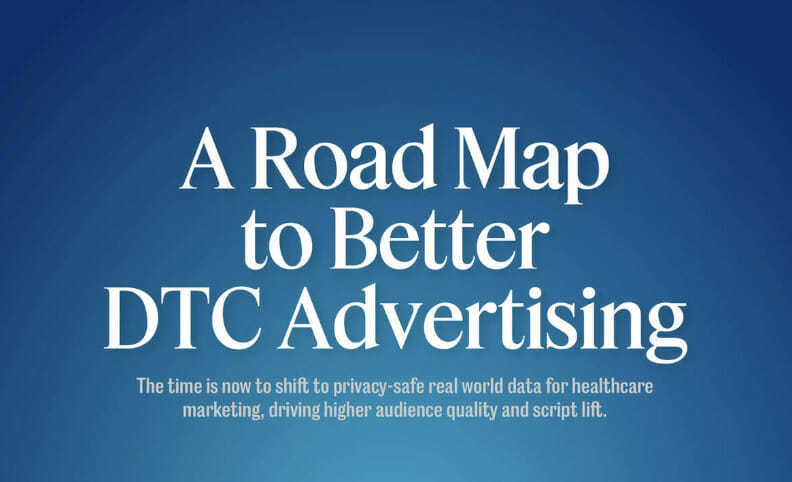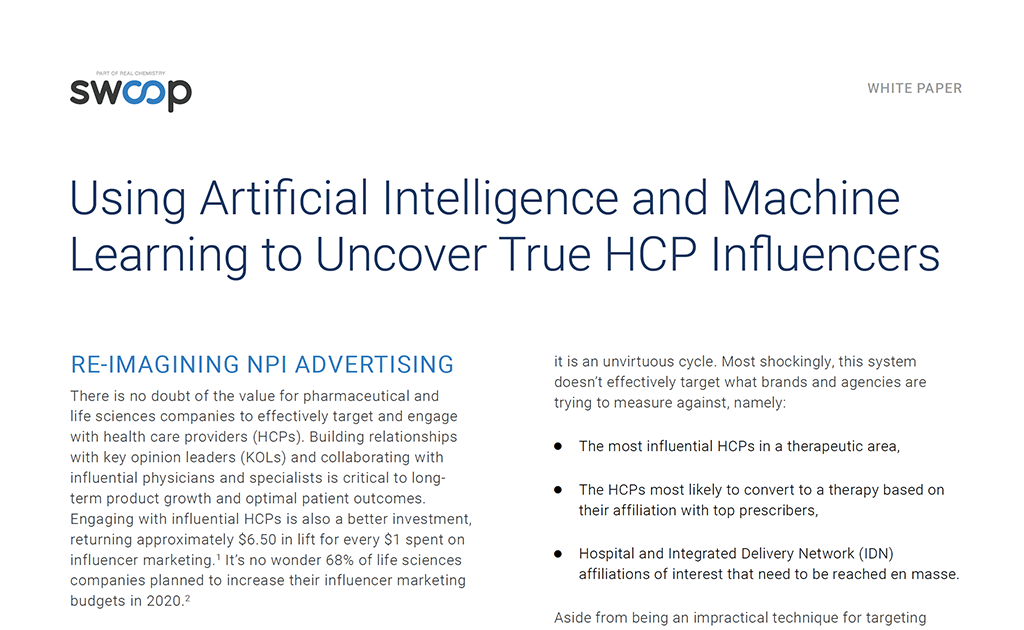Successful campaigns motivate patients to act, empowering them to participate in their health journey and improving outcomes while generating revenue. Passive metrics disconnected from real world impact should no longer be the industry’s currency — best exemplified by impressions and purchased as CPM, or cost per mille. Impressions don’t clarify what happens on the full patient journey and are not relevant outside of the marketing world; real value lies in the audience itself.
Impressions aren’t correlated with improved campaign performance, but audiences based on real world data (RWD) or insurance claims, are – and ultimately, higher audience quality (AQ) leads to higher script lift. AQ is a measure of an audience, for example, if a patient segment for an asthma drug consists of more asthma sufferers than is found in a random sample, the general population or a specific demographic. The better the data, the higher the AQ and the more valuable it is. By shifting to an “audience as currency” standpoint, you can re-inform your targeting strategies. Audiences generated from RWD are not only more precise, but also travel, enabling an omnichannel solution. Marketing to one audience across screens creates memory and familiarity — a patient will come to know a brand via a repeated advertisement, especially when that campaign is viewed across devices and when it’s highly relevant to them.
Likewise, by treating data as a product, you can leverage a patient’s health history. Any brand-specific ideal patient definition can be mined from RWD using artificial intelligence (AI), enabling more specific messaging. Not only can audiences be targeted to coincide with key intervals in their health journey, but new patients or those who have recently converted can be addressed directly and reached on their preferred channel. Personalization is key for successful outreach and is only achievable by knowing your audience.
This new approach to targeting is especially crucial for television. Unlike digital, TV buying is scarce – however, data-driven linear (DDL) allows marketers to move away from legacy demographic targeting, reducing waste and maximizing their media investments. By utilizing custom audiences derived from real world data, marketers can plan better, shift spend and ramp up what’s working, increasing cost-effectiveness. Attribution from DDL grounds the idea of “audience as currency” by giving marketers insight into how an ad performed among a target audience through script lift. Once RWD reveals that the number of prescriptions filled elevated after a campaign went to market, the significance of an actionable audience built from actual insurance claims is clear; there’s no comparison to views or impressions versus script lift.
Doing away with traditional marketing metrics and instead prioritizing clean, robust data used to generate precision-based audiences leads to a greater ROI. By substituting cookies, trackers and generic demographics for privacy-safe health history data layered with viewing data and other personalization indicators (e.g., ACR), marketers can contribute to a brand’s bottom line in a meaningful way. Re-evaluating KPIs and leveraging data and audiences is the next pivotal step moving marketing forward.
Swoop consistently proves the value of higher AQ to our clients. For example, through a recent partnership with a leading addressable TV provider, we helped a pharmaceutical client achieve 1.8x more patients, a 20% increase in HCP visits, a 34% increase in patient-driven diagnostic screening, and 24% lift in brand conversion — all within three months. This dramatic increase is typical when dealing with RWD and actual anonymized patients that can be targeted based on condition instead of baseless categories with no true connection to health status.
To find out more visit www.swoop.com.
With more than 15 years of experience in both media buying and media sales, Kurt brings a unique perspective to healthcare marketing. He is responsible for overseeing Swoop’s television partner relationships and enhancing client campaign strategies across activation channels, driving optimal brand outcomes. Kurt holds a degree in business and psychology from Ohio University.










